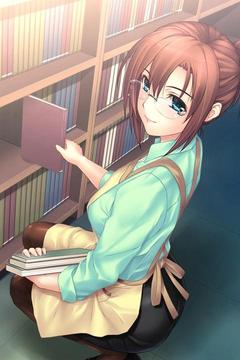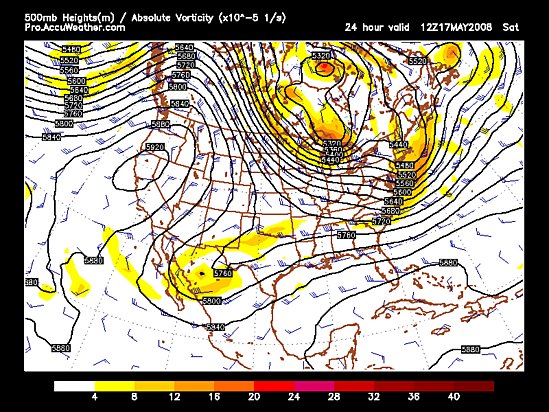March 27, 2009

First comes this story concerning a much improved refining process. What is described as a "continuously flowing fixed-bed" process allows a vast increase in efficiency and reportedly can be managed to produce no waste water. A big advantage of this method is that it uses a reusable catalyst rather than expendable reactants. Finally, as its name implies the process is...continuously flowing, which removes the "filling/emptying reaction tanks" stage and massively improves flow output. One of the developers This comes on the heels of the sucsessful testing of a seawater algal oil farm in Florida. This produced a thousand gallons of refined ATSM certified biodiesel on an eight of an acre...though the time interval is not mentioned. There is more on this here.
This is particularly big news as they not only were using seawater..but open ponds.
Getting this performance from a SEAWATER species in open ponds vastly increases the potential locations and at a stroke reduces the fresh water demands of such an industry.
Finally, a recent breakthrough in biodiesel from discarded coffe grounds may at first blush seem to be of limited utility (one would want to use already used coffee grounds to avoid displacing excessive amounts of forests or cropland for coffee beans) but it could possibly have a non trivial benefit.
You see, the Coffee diesel is reportedly much more stable than some other biodiesels so there exists the chance that it may have some utility as an organic additive. This last is speculation of course, but it bears investigation.
Hydrocarbons are very hard to replace for many mobile power applications (vehicles...especially aircraft) because they are so good as energy carriers. With that in mind, Brickmuppet Blog has been touting the advantages and potential of algal oil for some time as the potential energy density advantages over other oil crops are stupendous (300 percent or more). Unlike other oil crops it need not necessarily displace food acreage. It is very renewable, should not impose a severe environmental impact if properly managed and such farms can (in theory) do double duty in waste water treatment. With Nuclear power providing the refining and distribution energy we have the potential to have a clean, sustainable and damned robust energy network both electrical and liquid.
Posted by: The Brickmuppet at
07:07 PM
| Comments (3)
| Add Comment
Post contains 408 words, total size 3 kb.
December 28, 2008
"Fortunately" after a tragic lab mishap involving Mentos, one member of the
 Brickmuppet's crack team of science babes is now ideally equipped to deal with comment threads that have returned from the dead! She now shambles up to answer these questions.
Brickmuppet's crack team of science babes is now ideally equipped to deal with comment threads that have returned from the dead! She now shambles up to answer these questions.First up, 'Alternate Energy' asks about the relative energy yields of sugar beets and switch grass.
That's a hard one to figure as there are several factors involved, but some ballpark assumptions can be made.
Here sugar beets are credited with providing even better yield than sugar cane at an experimental French farm.
For ethanol, the top yields per acre are 714 gallons from sugar beets in France and 662 gallons per acre for sugarcane in Brazil
This might well be misleading as sugar beets are hard on the soil and need to be rotated rather more than other crops. That site mentions that one sugar beet crop per field every 4 years is a good rule of thumb with one per 3 being rather risky, so the number probably would realistically be 1/4th of that given.
By comparison, according to this report, switchgrass yields a theoretical maximum of 1,150 gallons of ethanol per acer.
These numbers are also somewhat as the celulosic process mentioned in the post is not fully operational (though it is very promising). The big advantage of switchgrass is that it is a weed, a native species and can be grown very well on marginal land that isn't really suitable for other crops. This is not the case with sugar beets and is important because we don't want to be displacing food crops for fuel. That is a very bad thing!
I personally think that algael oil, about which more here, here and here is a better option in general with a yield of kerosene type hydrocarbons 50 times that of the best ethanol producing crops. However, switchgrass certainly has potential to supplement that. (Ethanol also works fairly well in suitable Otto cycle engines, whereas algae produces what is fairly close to diesel fuel.)
A comparison of various crop yields can be found here. Note that most displace food and that Congressional favorite corn is by far the worst of the lot.
Alternate Energy also asks in this post why there has been so little buzz surrounding Thorium Cycle Reactors (first mentioned here, or rather at the old blog, in '06).
The reasons for that stem from in part from the anti nuclear hysteria found in so much of the green movement, but also from a policy decision made by the Carter administration in 1977 when we got out of the fuel reprocessing business. The idea was that plutonium should not become a commodity to be traded and that this would ease proliferation risks...In practice this meant the US ceded an entire industry to the Europeans, the Russians and the Japanese.
Additionally, the media has been very hostile to nuclear power in general over the years. It should be rembered too that this is a technology that was abandoned. This gives, to a casual observer, the mistaken impression that it failed....which can cause it to be further dismissed.
The most promising thorium reactors are liquid fluoride reactors which burn up the vast majority of their fuel, far more efficiently and with less ultimate waste than other types. However this cycle is a breeder cycle and that got it nixed from consideration. Other types of thorium plants have the advantage of using thorium fuel instead of uranium of course. This vastly increases global fuel reserves but these other thorium reactors don't really minimize waste as far as I know.
A previous post on this blog regards nuclear power in general can be found here, and nuclear scientist Kirk Soronsen...who actually KNOWS what he's talking about...has a blog as well as a very informative discussion forum where thorium fueled reactor related issues are discussed in great detail by a variety of people far more experienced in them than an undergraduate oceanography major.
Undead science babe has been identified as "Franken Fran" and is a creation of Manga artist Kigetsu Katsuhisa.
Posted by: The Brickmuppet at
05:17 PM
| No Comments
| Add Comment
Post contains 699 words, total size 6 kb.
October 12, 2008
 One of the Brickmuppets crack team of science babes points out that
current and very near term technologies have the potential to meet our energy needs
for the foreseeable future...without giving huge vast sums to the
perpetrators of windmill boondoggles.
One of the Brickmuppets crack team of science babes points out that
current and very near term technologies have the potential to meet our energy needs
for the foreseeable future...without giving huge vast sums to the
perpetrators of windmill boondoggles. 
This reactor is developed from a General Atomics design intended for educational purposes and is currently making use of the regulatory loophole designed for very small and safe reactors. The reactor is "walk away safe" and has NO moving parts.
(It does need connections for a heat exchanger to operate a steam plant and turbogenerators)
With each producing enough power for ~20000 homes the residential power needs of 300 million normal sized American homes could be met with 15,000 of these things. This number makes an interesting comparison with the companies tooling up to build 4,000 of the little boogers over the first 10 years. This number does not allow for industrial level power generation of course.
There are other small reactors intended for mass production as well.

An interesting design from the Oregon based firm of NuScale Power has been designed to be just small enough to allow for US industrial limitations.

(The fact that we have lost the capacity as a nation to produce heavy industrial castings is worrisome in and of itself, but it is not something that can be fixed in the short term.)
This design is not as maintenance free as the others but it has a little less than twice the generating capacity.
Redundancy: Lots of small genrators are inherintly more resistant to single point failures than a few large ones. Large nmbrs of these, if relatively evenly dispersed would provide a good hedge against grid damage from natural disasters, deliberate attacks or squirrley wrath. The big northeast power failures of 1968, 1977, and 2005 were not just caused by the aged grid,but because the system was (and is) still fairly centralized.
Scalability: Power can be increased by the simple exedient of adding new reactors. All of these are designed to be set up in fairly remote locations. This allows bringing clean power to remote areas (the raison d'être of the 4S reactor for instance). This can be for industrial applications, or power to rural or third world settlements. Power allows not only industrialization, but such basics as refrigeration and water purification which are lacking in much of the world.
Reduce strain on the grid: The US energy grid is old..the oldest in the world simply because it was the first large scale one. This is part of the reason the big blackouts not associated with natural disasters happened in he northeast..the grid is oldest there. Distributing and decentralizing the power supply allows there to be less strain on the grid at any one point. This is not practical with, say, a coal plant, as the transportation infrastructure for the fuel is uneconomical to duplicate, but with nuclear power the refueling/replacement takes place every 10-40 years depending upon the specific design, so that is no longer a major consideration. Incidentally, this was, reportedly, one of the reasons the Czech Republic went with Hyperion.
We've already signed up our first customers, Romania and the Czech Republic. They were looking at a very high infrastructure cost for an electric grid, but are now doing a distributed model.
Grid upgrades need to be done of course, but this allows both for more time and far less disruption in the process.
Note that while the ammounts of waste produced by these are very small the waste must be dealt with. Until the late 70s the US planned to reprocess its nuclear waste. This not only allows most of it to be reused greatly increasing reserves, it significantly reduces waste that needs to be disposed of.
Belgum, Germany, France, The UK, India, Japan, and Russia all reproces their waste, however, the Carter administration, as part of a larger overall policy of making bad decisions whenever possible, outlawed nuclear reprocessing. Now the plan is to bury the unreprocessed..and therefore more dangerous than it needs to be...waste in a Yucca mountain cave. This was selected primarily because of the areas relative geological stability and Nevada's small congressional deligation and number of electoral votes.
Reprocessing is the key to nuclear power.
We simply MUST start building large reprocessing plants. (Reprocessing plants can be designed produce scads of electrial power as well).
Beyond that everything needed for energy in perpetuity is easy.
Brian Wang reports that great breakthroughs are being made in thermoelectrics, which has the potential to greatly increase the useable output of the above mentioned reactor designs ( or, alternatively remove the associated turbines and their maintenance/repair costs)
This would, as well, increase the effeciency of most other industrial processes.
In the short term "Drill Baby Drill!!!" and increasing efficiencies in diesel and hybrid vehicles will help the world meet its liquid fuel needs but petroleum is a finite resource. Biofuels are one answer, but not the corn based ethanol that requires vast acreage of food crops to be displaced...and is damned inefficient anyway. The only biofuel that is really good in terms of amount produced per acre is oil from algae. There have been big advances in this recently as well as several production ventures. (More here and here) Algae can be cultivated in lots of places, but both he hydroponic systems and the refining process require energy....thus the necessity for nuclear power.
If these things are followed through on we could have a remarkably robust, clean, and more than adequate set of complimentary power sources within 20 years. If we go with windmills we will have to lay vast ammounts of power cables to vast ammounts of windmill that wil be highly erratic in their output...though via subsidies...we will make T.Boone Pickens rich.
As this is the silly season there are thoughts on the politics of this descretely below the fold.
Posted by: The Brickmuppet at
06:18 PM
| Comments (3)
| Add Comment
Post contains 1435 words, total size 13 kb.
October 03, 2008

Thorium is abundant and can be used in nuclear reactors much like Uranium.I want to alert you to an exciting development in the US Senate regarding
thorium--legislation introduced by Senators Hatch and Reid to amend the US
Atomic Energy Act to further the utilization of thorium as a planetary
energy source. This represents what so many of us have been saying and
hoping for for so long, a safe clean abundant energy future powered by
thorium.
Here is a link to the text of the legislation and the press release from
Senator Hatch's office:
Even better, when used in a liquid fluoride reactor, thorium is extremely efficient and can be utilized to reprocess nuclear waste reducing the amount of waste that has to be disposed of significantly*. Its efficiency would reduce waste further and likewise reduce radioactive fuel consumption...extending our reserves significantly.
Until now.....
There is a discussion of this over at Energy From Thorium and there is more on recent developments in thorium power here and here. Nuclear power developments including thorium news from the US and India are mentioned here.
That this is actually before congress is an extremely important development and potentially a real breakthrough.
While the bailout is immediate in importance, as soon as that is resolved, write your congress in support of this legislation. It may hold the key to our future.
* This explains why normally anti-nuke Harry Reid is a co sponsor. It promises to vastly reduce the amount of waste that would need to be stored at Yucca Mountain.
Text of he legislation is below the fold.
more...
Posted by: The Brickmuppet at
05:37 AM
| Comments (2)
| Add Comment
Post contains 1026 words, total size 10 kb.
July 12, 2008
One of the Brickmuppets crack team of science babes crunches the numbers and comes up with some pertinent suggestions.

There is little to add really.
The Pickens plan involves filling the windiest parts of the west all the way from from the Canadian border to the Rio Grande with windmills over a 10 year period.
Back to the weather problems...the area is very windy on average but that is just an average...atmospheric high pressure systems which can cover vast areas tend to stop the wind....How vast an area?

The two low wind high pressure systems on this map could stretch from ...oh...say...the Canadian boarder to the Rio Grande!
Note that high pressure systems are also associated with heat waves and cold snaps, so the wind would not be available during weather conditions that would boost demand.
Wind is inherently problematic in this regard...
This does not get into incidents where the wind blows too fast and damages the mechanism....not unheard of in this area where powerful line squalls account in part for the high AVERAGE wind velocity.
Besides the fickleness of wind there are other problems:
The areas involved are quite far from most places the power is needed. Power loss through the resistance of power lines is going to take a huge toll.
Windmills have moving parts and dynamos that require a fair bit of maintenance and this is multiplied in this plan by the thousands...in remote areas.
Freeing up natural gas for vehicles is illusory...for one thing we actually have to import some of our natural gas supplies and few cars in the us can run off NG. Its energy density sucks too...it is little better than electric with regard to range.
The money and the 10 years would be far better spent doing mass producing Generation-4 reactors.....its doable...we know this because it is BEING DONE!( just not here)
This plan is a monumental waste of time and energy. Like the corn based ethanol boondoggle this proposal smells. It makes no economic sense whatsoever unless one takes into account the subsidies offered for wind power by congress. Charles Barton has the scoop here in the transcript of a remarkably candid interview with Pickens who admits that not only is he not going to pursue the proposal without subsidies, not only is it not going to produce constant power, but he is going to see to it that none of the windmills are built on his land!
This is, like, the ethanol from corn boondoggle, little more than a way to siphon off taxpayers money. Unlike that fiasco...it is less than likely that there is any good faith mistake here.

A Brickmuppet Blog post on nukes in general from last year can be found here.
'Science babe' is Maria from Sakura Wars....out of character and out of costume.
Posted by: The Brickmuppet at
07:55 PM
| No Comments
| Add Comment
Post contains 488 words, total size 4 kb.
June 01, 2008

Despite completely unrelated text on her chalkboard, one of the Brickmuppets' Crack Team of Science Babes tm reports on progress on the fuel cell front.
It seems that two separate science teams, one at MIT and one at Basque University in Spain have developed improved Methanol fuel cells that not only have increased output but are dramatically cheaper due to the reduction in the amount of platinum required.
The inability to find a substitute for platinum has been one of the big sticking points in fuel cell developments and the major hitch in the Administrations ambitious fuel cell initiative from 2001. The previously anticipated substitutes did not pan out.
Methanol fuel cells run at much lower temperatures than other types and are anticipated to have many applications, particularly personal electronics, as they would have far greater run time than any batteries and could in theory be powered by off the shelf rubbing alcohol methanol from a fuel cartridge or something. Fuel cells in general are also much more efficient than even diesel engines in producing electricity, though they tend to be very fuel specific and there have been scalability problems.
This is potentially a huge breakthrough.
'Science Babe' is a one second gag from Lucky Star that I did not get....screencap was shamelessly stolen from Chizumatic. Go buy the DVD and support Avatars' livelihood!
Posted by: The Brickmuppet at
09:20 PM
| Comments (6)
| Add Comment
Post contains 228 words, total size 2 kb.
May 23, 2008

There is a lot of talk regards Robert Zubrin's plan.
Zubrin is a talented engineer and has an amazing out of the box imagination. His plan is laid out here and there is a typically literate discussion of it going on at Jerry Pournelle's place here.
One big quibble I have is that Zubrin seems dismissive of fears that corn to ethanol processes will lead to food shortages, and indeed it is likely that a lot of the current spike in domestic food prices is due to petrol induced transportation costs.
However, both directly and indirectly, burning food will raise its cost and scarcity. (It's Science!)
Zubrins plan is interesting in other ways. While he is a biofuel advocate, his focus is on methanol. Methanol has a few disadvantages...
It's got poor energy density and it is corrosive, (eating aluminum and rubber) thus it requires specially designed engines. It is also toxic but given that gasoline is not exactly FDA approved either this at least seems to be a silly gripe. Methanol (like Ethanol) is unsuitable for diesel engines and is generally used in otto cycle engines which exacerbate its poor energy density...One can go ~ half as far on a tank of methanol...assuming you don't have an aluminum engine block in which ones trip is shorter still.
(Much is occasionally made of the fact that Methanol can be refined (via dehydration) into dimethyl ether which is a diesel fuel with a substantially higher cetane rating which gives it even better energy density in a compression engine than regular diesel. This is actually a superb diesel and jet fuel with spectacular energy density per volume...rather too much in fact as, unlike other such fuels it is highly flammable, making it a safety hazard for ships and jets.It also is a gas at normal temperatures and pressures which nullifies its energy density advantage and imposes handling problems. Thus I am very skeptical that CH3OCH3 is the answer to our fuel needs.)
Note though that methanol has the very large advantage that it can be made from most types of trash as well as the inedible portions of crops....in fact it can be made from virtually any bio-organic matter.
(This is an good place to remind people that non-edible portions of crops are not technically trash, they are normally recycled into the soil as fertilizer, so alternate fertilization methods are necessary...this is not insurmountable of course, but it is a nontrivial concern)
Methanol is, despite its disadvantages, a vastly better idea than corn based ethanol which is ranked by efficiency on this chart that will...er...spoil the lunch of ethanol fanatics.
Zubrins other big proposal is to mandate flex fuel vehicles.
This is a very sensible idea and would mean that any car sold in the US would have to be capable of running on a wide variety of fuels including corrosive ones like methanol. This would allow consumers to buy whatever fuel was cheaper (perhaps seasonally) and solve a lot of the chicken/egg problem with alternative fuels....namely that people won't buy an alternate fuel car if they cant get fuel for it...and gas stations wont install methanol or other alternate fuel pumps if there are no cars to sell the fuel to. The downside to flexfuel vehicles is a slight reduction in efficiency since tolerances are necessarily lower. Also it has been pretty much accepted by now that it is challenging to say the least for any flexfuel otto engine to be made that will run on kerosenes like diesel fuel.
Ignoring, for now, the potential represented by steam cars, this is bothersome because not only is the diesel cycle extremely efficient but the kerosenes and vegetable oils they have historically run on have very high energy densities.
Now two companies, Scania and Transonic Combustion have gone at this intractable problem from the opposite direction and produced diesels that will run on alcohols...and unmodified on regular diesel...and on biodiesel! The Transonic development is rather closely guarded at the moment, but there is a bit of info here. Also, there is a good write-up on the Scania design (which is already commercially available)over at Green Car Congress.
Not only that...biodiesel, particularly from algae is an exceedingly promising fuel that need not interfere with crop production in any way. Brickmuppet Blog has ranted on this from time to time but there have recently been a promising development or two in this area.
Algael oil is 50 times as productive as the best non-algael biofuel crops. There are hurdles to be sure, but certain species of algae produce oil as a energy storage medium and it requires very little refining to be used as fuel. The algae needs water, light, fertilizer and a sealed environment to keep competing , less "oily" breeds of algae, out, but its tanks need not be associated with farmland in any way, thus no food crop displacement. With artificial lighting (and assuming a way to mitigate the kerosene smell) the algael farms and pressing/refining rigs can be located in industrial parks or even cities. It is the only crop that can potentially replace petroleum in cars without turning the entire planet into farmland.
There is a very comprehensive overview of Algeal Oil theory here.
Note that with flexfuel vehicles, one need not worry about the need to replace ALL of the oil we consume. A mixture of algael oil, alcohols from trash and even our own domestic oil production would render us energy independent. The competition between the three would likely drive down prices over time as well.
Of course there is no such thing as a free lunch. None of the biofuel proposals will work without electrical input of some sort, either to facilitate fermentation or provide light, ventilation or just press the algae. Thus an external power source is needed. If one is serious about biofuels one is going to need to increase power generation capacity as our grid is already under strain.
If one is serious about biofuels one is likely enthusiastic about reducing pollution. Thus one is going to have to look at relatively non polluting sources of said power.
If one is not living in a fantasy land one needs to dismiss SOLAR and wind except for certain regional/ niche applications...our hydro is about at capacity and geothermal is useful in limited areas.
Thus if one is serious about biofuels one is going to be foursquare for a crash program to increase our nuclear power infrastructure.
Ultimately, when it comes to alternattive energy, nuclear is the only alternative.
Nuclear is the future.
A rant from last year on THAT topic is here.
Today's 'Science Babe' is actually Emma Sky from the Phoenix Wright games. I believe it is official artwork despite her summer attire.
Posted by: The Brickmuppet at
11:54 PM
| No Comments
| Add Comment
Post contains 1163 words, total size 31 kb.
March 04, 2008

One of the Brickmuppets crack team of science babes brings us this Jim Fraiser post on what may be a big step forward in biofuels.
It seems that a company named Green Star Products has completed a low cost algal farm that is, in theory, suitable for quick setup nearly anywhere outside of polar/subpolar regions.
Oil from algae produces about 50 times the yield of the best oilseed crops, and this sort of arrangement might not displace food crops to the same extent as, say ethanol from corn, which is always struck me as a dubious idea.
I'm more excited by thermal depolymerization as it doubles as waste disposal.
This however is really interesting. Note that there are considerable hurdles (read the whole post for Fraiser's thoughts on that) and I still think that without lots of cheap nuclear power to provide the heat that thermal depolymerization...and to a lesser extent algae refining...need then the future of biofuels is marginal at best.
WITH nuclear power, they could potentially produce high density, carbon neutral, liquid fuel with little disadvantages over natural petroleum....a win-win for everybody except anti-nuke hysterics and the most hardcore greens.
Note: this is a repost of a post originally made on March 15, 2007 as the original post is inexplicably not linkable.
Posted by: The Brickmuppet at
09:46 AM
| No Comments
| Add Comment
Post contains 216 words, total size 2 kb.
January 14, 2008

One of the Brickmuppet's crack team of science babes points us to two stories regards breakthroughs in biofuel practicality.
First via Instapundit, General Motors has entered into a partnership with Coskata on a celulosic ethanol process ( more here ,here and here). Given the involvement of a major auto company, and the the particulars of the process, this seems like big news. The process in question uses "patented microorganisms" and reportedly produces ethanol at approximately a buck a gallon. Not only does this process NOT displace food crops, the company claims it can actually "eat" a fair amount of municipal waste in the process. This is a swell win-win if true.
Note that the one dollar a gallon is misleading, not just because of profit and overhead but also because ethanol has less energy density than gasoline so one would need to burn more to go the same distance** (assuming the valves in ones car are even ethanol rated). However, the process it is still very promising as the price at the pump would still, theoretically, be comparable to current gas prices.
In related news, scientists have been looking at the highly promising cash crop switchgrass as a cellulosic ethanol feedstock. Interestingly, it is not an exotic crop, but one of the primary native plants of the North American tall-grass prairie! IT GROWS IN THE MIDWEST NATURALLY! Thus its environmental impact is likely to be rather limited. ![]()
According to this article (via The Energy Blog), the scientists are claiming a 540% energy return from switchgrass. Woah!
No that is not a typo. That is over 5 times as much energy (in ethanol) being produced than was used to grow, harvest and process the crop. The study seems to assume using switchgrass derived fuel to power the process so if one were to apply external electricity...oh say...nookuler..then yields would be rather higher. This is still problematic compared to the energy needed to get Saudi Oil, but that gap is closing.
Switchgrass is particularly interesting because it grows quite well on marginal land (it is a weed after all) thus it need not displace food crops. Being a native prairie plant it could actually be good for the environment in central North America, though this would depend on details of how it is harvested. It certainly should not have much of a negative impact.
I still think algael oil is the best biofuel bet for many things, but both of these ethanol breakthroughs are very promising. If we were using more of the ultimate flex fuel vehicles...we would not need to choose and could buy whatever was cheapest seasonally! ![]()
**In this regard ethanol is actually far better than methanol.
"Science babe" is Myuki from Lucky Star and thus is an imaginary cartoon character...fan mail and marriage proposals will, therefore, not be forwarded.
Posted by: The Brickmuppet at
08:09 PM
| Comments (3)
| Add Comment
Post contains 478 words, total size 5 kb.
December 23, 2007
One of the Brickmuppet's crack team of science babes brings us an overview of several recent, not so recent and recently noted developments on the energy front.
overview of several recent, not so recent and recently noted developments on the energy front.
There has been a bit of buzz regards the recent announcement of Toshiba's "Mini Nuke". A very tiny reactor with no moving parts (aside from convectioning sodium) that has great potential for decentralizing the power grid.
Despite some confusion, this reactor seems to be different from the little reactor that was first discussed at Brickmuppet Blog in '03, namely the Toshiba 4S reactor or "nuclear battery". This is the reactor offered to Galena Alaska and is now slated to be operational there by 2010 ...(a PDF from Galena's public info office is here). The dimensions given for the mini nuke reactor are much smaller than those given for the 4S at 20 ft x 6 feet....about a third the size of the 4S....close enough to 1/3rd the height that a metric conversion error is possible.
A perusal of the Toshiba nuclear website produces no info on the English site but slogging through the Japanese side produces this page on the 4S and the miracle of Babblefish indicates that the design now comes in 2 sizes 10 and 50 MW. There is no mention of the small reactor mentioned above. However, as I was posting this I found that Brian Wang believes this is indeed a separate reactor and points to this article from 2001. If this is right (and Wang seems to be on top of this stuff) then this is a pretty big development. It also explains why the Next Energy News Article has the first operational one slated for use in Japan rather than the US.

In this country as it allows a HIGHLY decentralized (and therefore robust) energy grid. Single point failures like the 3 big northeast blackouts would be a thing of the past if little reactors were dispersed around areas more than 60 feet above sea level and not subject to explosive vulcanism...IE most of the country. These two reactors are highly efficient and would be swapped out at the end of their lives ( 40 YEARS!) and have their contents taken to other larger reactors for reprocessing and recycling.
With a plant height of only 20 feet, the smaller reactor might well have civil marine applications especially given the recent concern about merchant ship pollution (ironic since marine diesels are amongst the most efficient internal combustion engines on the planet... notwithstanding their smokey start-ups).
As Brian Wang Points out, these 2 reactors are not the only small nuclear reactors reaching the end of their development and he has a link rich post on several of these here.
There are other overviews of these smaller reactors here, here and here. Brickmuppet Blog commented briefly on one of them here .
On the big reactor front, General Atomics has a pebble-bed reactor similar to those being developed in South Africa and Japan. The General Atomics reactor is the GT MHR.
Longtime readers know that thanks in part to Kirk Sorensen's excellent website I am particularly partial to thorium reactors both because of their efficiency, low waste and the commonality of thorium. Well, there is a liquid salt reactor that runs on the sort of U233 and thorium mixture that Kirk Sorensen has long advocated the FUJI MSR. This is a molten salt reactor being developed by Fuji Electric a Russian firm and General Atomics. This reactor is complementary to the above mentioned in that it is somewhat flexible in its diet of fissionables and can actually "eat" some nuclear waste!
There is more from here...
In the Molten Salt Reactor (MSR) the fuel is a molten mixture of lithium and beryllium fluoride salts with dissolved thorium and U-233 fluorides. The core consists of unclad graphite moderator arranged to allow the flow of salt at some 700°C and at low pressure. Heat is transferred to a secondary salt circuit and thence to steam. The fission products dissolve in the salt and are removed continuously in an on-line reprocessing loop and replaced with Th-232 or U-238. Actinides remain in the reactor until they fission or are converted to higher actinides which do so.The FUJI MSR is a 100 MWe design operating as a near-breeder and being developed internationally by a Japanese, Russian and US consortium.
The attractive features of this MSR fuel cycle include: the high-level waste comprising fission products only, hence shorter-lived radioactivity; small inventory of weapons-fissile material (Pu-242 being the dominant Pu isotope); low fuel use (the French self-breeding variant claims 50kg of thorium and 50kg U-238 per billion kWh); and safety due to passive cooling up to any size.
There is a long list of papers on high temperature reactors here and spirited and lettered discussions in Kirks discussion forum here.
These developments in atomic power are really a fish or cut bait moment for the greens. Either they really believe global warming is a problem...or they don't.
Lets look at their actions regards windfarms ...ummm..they oppose WIND FARMS!?!
This indicates that the answer is "don't". Rather, it seems, it is just a political tool for them. This is unfortunate. While we at Brickmuppet Blog don't think AGW is the most serious environmental crisis facing us , it is certainly non- trivial Even if the skeptics are right and the major reasons for the warming of the planet are natural, it is stupid to add to the issue and create other problems through pollution. We are on the cusp of being able to solve most of the problems relating from emissions...bring clean power to the developing world and raise the standard of living across the planet over the next 20 or so years...only the hairshirt luddites are standing in the way.
More thoughts along those lines, and yet more analysis of the Galena reactor here. (via Ubu)
Alcohols have been getting a good deal of attention lately and to that end, Alan Boyle has a fine and link rich article on this here, (HT Instapundit).
That post and much discussion has been sparked in part by Bob Zubrin's new book. Zubrin advocates methanol, which is unexciting because of its very low energy density, but is easier to make and shouldn't displace food crops. It's big drawback (aside from being corrosive) is that it reduces cars to near electric ranges. His proposal is interesting in that he wants to mandate flexfuel vehicles.
This opens the market to competition not just amongst suppliers, but commodities.
For the reasons outlined here I think steam cars (!?) may be the best solution for this. Weather the engines are external or internal combustion, the flex-fuel idea is certainly doable and a practical way of getting around the chicken/egg problem of alternate fuels.
As to recent developments in those fuels....
Shell is building a biofuel refinery in Hawaii.
There is a pilot program in Arizona to use the CO2 from a coal plant to grow algae for oil production.
A huge new biodiesel refinery has opened in India.
....On the battery front Pixy points to this article. Possibly the biggest energy story of the year.
A lithium ion battery with 10 TIMES the capacity!
This is revolutionary!
This is big, from laptops to APUs to cars. If this pans out it makes electric cars practical, and makes portable battery packs for computers and other applications last 120 times as long...or gives 10 TIMES the power for processing or whatever you need to do!
In other battery news, Toshiba (remember them?) has developed a lithium ion battery that can be recharged in a minute! If the two Lithium Ion developments are in any way compatible, this could really speed up charging of electric cars!
It would also put a strain upon the energy grid which is another reason why we need to start building those dispersed little nuke plants we started out with.
You see, Nuclear power is actually the key to most of these energy independence proposals.
*That is, electric cars require power for their batteries.
*Hydrogen must be manufactured through electrolysis or other means.
*Biofuels, even if they are algael biodiesel, biodiesel from waste, or alcohols require some energy input to produce their fuel in industrial quantities.
There is no such thing as a free lunch and these technologies are no exception. These are interesting technologies, but they are energy carriers for the most part, and that energy must come from someplace. Solar, and and other fairly clean non nuclear sources have niche applications but for the power generation needs of an industrial society atomic power is really the only clean option.
Whatever path secondary power and energy carrier systems take, Atomic Power is the key to the future.
Those that oppose it are the futures enemies
Posted by: The Brickmuppet at
07:54 PM
| Comments (1)
| Add Comment
Post contains 1584 words, total size 15 kb.
December 15, 2007
...Steam Power for instance.
It seems that steampunk lives beyond alternate history novels or the pages of Ninja High School, for one of the Brickmuppets' crack team of science babes brings us this series of links on a recent spate of interest in external combustion applications.
Ninja High School, for one of the Brickmuppets' crack team of science babes brings us this series of links on a recent spate of interest in external combustion applications.
Steam power, you see, has one advantage that is quite appealing in an age where the future of liquid fuel seems to be in a state of flux. Steam is inherently flexible in its fuel.
The reason for this is simple enough. The inner workings of an engine work over a fairly narrow range of tolerances. You can expand the range of fuel types in an internal combustion engine somewhat by sacrificing a bit of efficiency. In this regard the comparatively efficient Brazilian style flex fuel vehicles are a great innovation in being able to burn ethanol and gasoline which have rather different properties...yet even they are far more alike than different. For instance, you can't run diesel in a gasoline engine...it is too viscous, and you can't run gasoline (or most alcohols) in a diesel because they will explode both prematurely and too hot, damaging the engine.
In a steam engine, the engine is optimized for whatever working fluid the boiler uses (usually dihydrogenmonoxide). However, the actual fuel is burned externally to the working fluid. All that is required is that the fuel provide heat. This fuel can theoretically be any heat generating substance from buffalo chips to fissioning metal, but for practical automobile purposes we'll confine ourselves to liquid or compressed gas fuels...the only adjustment required at for accommodating a wide range of fuels from oil to natural gas is the configuration of the burner (and in the case of compressed gasses the container of course). This is orders of magnitude easier to fix than the intricate workings of an actual engine. Steam engines can be in pretty much any configuration from reciprocating to rotary to turbines, though turbines generally give lower fuel efficiency.
This might sound like a hairbrained scheme...but as I am bald such schemes have appeal to me...they also have appeal to a company called Cyclone Technologies who (via Green Car Congress), is marketing a high efficiency Rankin Cycle steam engine for cars. This particular engine has twice the horsepower per given volume of a gas engine and produces all kinds of torque. Not mentioned in the article is the time needed to get up a head of steam. Of course if your vehicle is a hybrid you can make your fast getaway from the inevitable hoards of zombies on an electric motor while your main engine builds pressure.
A less exciting idea (but still using steam) Is this BMW concept, it has none of the flexfuel advantages, but rather uses waste heat from a regular engine to run a small steam powered generator, increasing overall efficiency. This, however is a detour from the other steam powered innovations that have been mooted recently.
The German Firm of IAV has produced the Ezee engine, a steam engine that can go from cold start to full power in 30 seconds. It is also exceedingly efficient producing diesel like fuel economy! There is an APU that keeps the boiler from freezing if left in the arctic for several days, however the engine and boiler have, astonishingly, been designed to be frozen solid without damage...requiring only starting it to melt the ice and run...though this is rather likely to take longer than 30 seconds (so watch out for the ice zombies!) . More analysis of this from the heat engine department of Okyama University in PDF form here and there is a PDF of a short Rutgers University paper on steam developments and their potentials here.
As to alternatives to oil, notwithstanding my lack of qualifications in this area, I've recently declared myself in favor of algae-generated biodiesel to most other biofuel alternatives. I say this because of their potential efficiency of generation, the energy density of kerosenes and because they are less likely to directly and indirectly impact food consumption. But whatever we eventually replace/supplement oil with, steam engines can use it and we can actually have the sort of direct competition between ethanol, gasoline, diesel, biodiesel, methanol and even natural gas that Dr. Zubrin so rightly calls for.
Note that steam cars are not at all far fetched, the Stanley Steamers I joked about in this post were real. In fact, steam powered cars were once considered a real competitor to the internal combustion powered automobiles, in part because of their comparatively high torque (for dealing with hills).
Of course these engines might have maritime uses as well as emergency generator applications and a whole range of other uses. Remember, the primary way we are able to get useable power from atomic fission is via steam...
...so steam IS the technology of tomorrow!
("Science Babe" art by Formalhaut)
Posted by: The Brickmuppet at
09:33 PM
| Comments (1)
| Add Comment
Post contains 826 words, total size 7 kb.
...as he facilitates future joy for the rest of us.
Yes, I admit it, I've liked what little I've seen of Lucky*Star ![]()
Posted by: The Brickmuppet at
08:16 PM
| Comments (1)
| Add Comment
Post contains 27 words, total size 1 kb.
November 24, 2007

One of the Brickmuppets' crack team of science babes runs the numbers on hydrogen and points us to this recent story about a breakthrough in bacterial hydrogen generation.
The results came as a result of experiments with the sort of microbial fuel cell described here. This design produces electricity in small amounts but its big payoff was in hydrogen, 288 percent the energy in hydrogen that was put in.
This is not quite as impressive as it sounds. For example, if one replaced all the cars with H2 it would require the generation of just over 1/3rd the energy required by all cars to fuel them. However all hydrogen schemes that don't extract the hydrogen from hydrocarbons have high energy costs, if this is scalable it is orders of magnitude more efficient and an energy producer rather than looser. That is big.It is also capable of processing waste and generating its own energy while doing it.
As a waste disposal technique this has real potential to be tremendously helpful (again, if it is scalable).
Hydrogen is unsuited for aircraft or ships but given enough cheap energy a case can be made for H2 fueled fuel cell cars. Their range would suffer,( from what I've read, about 150-200 miles is about the best one could realistically get without turning the fuel tank into a bomb) and that assumes very efficient fuel cells. If there are H2 stations everywhere, this becomes less of a problem.
However, this process, let alone any of the others, would only make sense for hydrogen production for cars if a vast amount of cheap power were available.
So, like a lot of alternate energy proposals, it is pretty much dependent on nuclear power being developed on a very large scale in this country.
Atomic power is the future.
Science babe is actually Maria from Sakura Wars. (Which I should watch at some point)
Posted by: The Brickmuppet at
12:52 AM
| Comments (9)
| Add Comment
Post contains 319 words, total size 3 kb.
October 29, 2007

One of the Brickmuppets crack team of science babes reports on this interesting design from India. Yes, Brickmuppeteers, it's a compact nuclear reactor that produces 100kw of energy from a 1m3 space!
Of course, it's heavy...being, you now, one cubic meter of heavy metal, but this could have applications for the shipping industry as well as remote power production in space or the third world. Such a device could run freshwater stills and provide distrbuted power supplies.
Note that a reactor is not a power source unless its fitted for radiothermal generation, (and then it's not really efficient). This device would have to be hooked up to a boiler to harness its energy. In fact it was designed in part with railroads in mind...the thing is small enough it could just sit in the firebox! ![]()
(OK "sit" does not convey the complexity o the connections involved)
IF they can make this thing as robust as one of NASA's rtg generators....this could fill a very useful little niche.
I WANT AN ATOMIC POWERED STANELY STEAMER!!!!
Ahem.....
More or less Stanley Steamer-free discussion here, at Kirk Sorensen's excellent thorium advocacy site, where one finds cool stuff like this all the damned time.
Posted by: The Brickmuppet at
07:04 PM
| No Comments
| Add Comment
Post contains 203 words, total size 2 kb.
September 29, 2007
 Babes brings us this Energy Blog post on NRG's application to build the first nuclear power plant in 30 years. Most astounding is the speed with which they expect to get the thing online, just 8 years from now! As James Fraiser points out, this may be due to the new streamlined rules the current administration has put in place recently,but it may also be because the Advanced Boiling Water Reactor lends itself to ease of construction (and has proven this capability in Japan and Taiwan).
Babes brings us this Energy Blog post on NRG's application to build the first nuclear power plant in 30 years. Most astounding is the speed with which they expect to get the thing online, just 8 years from now! As James Fraiser points out, this may be due to the new streamlined rules the current administration has put in place recently,but it may also be because the Advanced Boiling Water Reactor lends itself to ease of construction (and has proven this capability in Japan and Taiwan).The comments in the Energy Blog post are interesting. I agree with Fraiser and Kirk Sorensen that thorium reactors are a better idea in the long run as they handle the waste issue better, but the the ABWRs are proven (and safe) designs that can be brought online quickly.
Atomic Insights has related thoughts here.
"Science Babe" is, of course Emma Skye from Capcom's Phoenix Wright game.
Posted by: The Brickmuppet at
03:53 AM
| Comments (1)
| Add Comment
Post contains 167 words, total size 2 kb.
June 26, 2007

The Brickmuppet's crack team of science geezers celebrate the construction of the first Algaeal oil plant...in Alabama.
Oil production from algae is highly promising for several reasons but gets not nearly the attention of other biofuel processes, in large part because it is incompatible with current farming methods. The Iowa corn Mafia is not going to plant algae next year.
In my admittedly undergraduate opinion, this would seem to be a feature rather than a bug. Algae will inherently not displace food production, nor will it use up "waste" portions of crops that are normally recycled into the soil, preserving soil quality.
For some years I've been a member of a Yahoo group dedicated to this sort of thing....which from watching the news one would think is about the level of support its been getting worldwide. However there are several companies actively pursuing this as can be seen at this biodiesel wiki.
Algae can in theory, be grown off of sewage and in generally un-suitable areas for other crops. Algae has a high oil content....in some species over 50% making refining rather straightforward. Algae grows fast multiple crops can be pulled in in months, but the mechanics of how to avoid diminishing returns require fairly complex geometries in the incubators that are still being learned. Few companies have approached theoretical levels of oil production but the potential is rather stunning.
Compared to other biofuel crops (excepting, curiously, sugarcane)
Gallons of Oil per |
Acre per Year |
|
Corn |
18 |
|
Soybeans |
48 |
|
Safflower |
83 |
|
Sunflower |
102 |
|
Rapeseed |
127 |
|
Oil Palm |
635 |
|
Micro Algae |
5000-15000 |
Chart is shamelessly stolen from here where one Thomas F. Reising (PhD) reports on some successes by a company called Green Fuel Technologies and at the National Renewable Energy Laboratory. He estimates that biodiesel produced from 15,000 square miles (a drop in the bucket given the CONUS land area of over 3 million square miles) could produce all the fuel for our transportation needs. Note that efficiencies actually can be higher than this as it seems to be assuming ponds as opposed to the more efficient "watertube greenhouses" most of the focus is now on ....often as side units to various manufacturing operations eating the CO2 emissions. More on Green Fuel Technologies can be found here.
Between this and small scale (backyard) operations the potential for a highly robust, distributed, renewable energy source fairly resistant to monopolistic tendencies is really interesting.
A rather less sanguine take can be found in this Popular Science article, but at least some of the issues raised here seem to have been dealt with by other companies/ universities as related above.
The Wikipedia page on Algaculture, while fairly cursory is here.
Many hours of time can be wasted perusing this facinating Oil From algae Wiki..
One note:
Those numbers listed are concerned with oil production not total energy usage. The assumption is that power is added from somewhere to refine the oil.
Now algae is very easy to refine to oil, but it still must be refined and refining takes energy. Ignoring the solar energy the algae used to grow itself, Algael oil is one of the very few biofuels that can really fuel itself. It is very efficient. But to achieve its potential the power for the refining must come from elsewhere.
The highest density, least polluting energy source we have is nuclear...(I'm partial to thorium cycle reactors myself)
Again, there is no free lunch. We are (again )confronted with the simple fact that those who oppose nuclear power are not serious about the environment.
Oh...and one more thing....scarcely worth mentioning....
Regards the relative potential yield of various biofuels...take a look below the fold to grasp just what a boondoggle the corn to ethanol initiatives are......
more...
Posted by: The Brickmuppet at
09:24 PM
| Comments (5)
| Add Comment
Post contains 841 words, total size 30 kb.
June 17, 2007

One of the Brickmuppet's crack team of science babes storms out of lab 4 and right off the smoke free wagon....Why so glum you ask?
Well, according to James Fraser's blog , the senate has nixed Senastor Pete Dominici's National Renewable energy portfolio, which would have increased nuclear power and clean coal, in addition to wind, solar, tidal, geothermal and biomass....
Fraser seems fairly sanguine about this but the "Clean Coal" tech, despite its oxymoronic name, is quite valuable in that it sets prizes and research grants for developing exhaust scrubbers and CO2 sequestration techniques that are vital for coal burning even if we suddenly got no electricity from coal. ( coal is a vital feedstock for several processes....including steel production) . The nuclear option is the only long term effective solution to our energy needs, and it can make some of the marginal biofuel processes viable or vastly more productive. The other initiatives that weren't nixed all have some potential in limited geographical areas, but aside from wind and, possibly, geothermal have fairly serious environmental impacts of their own, and are simply feel good ticket punching for greens...right up until said greens sue to keep them from being built. A few might be developed into nontrivial energy sources, particularly for small scale applications, but the aggregate of all of the favored technologies will make a very small dent in our total energy needs.
By nixing nuclear power, this congress has proven that energy policy, the environment and pollution are not serious considerations to them.
feh...
Posted by: The Brickmuppet at
08:00 PM
| No Comments
| Add Comment
Post contains 258 words, total size 2 kb.
May 27, 2007
Blogging at his new digs, Stephen Den Beste has decided that these topics are too annoying to have comments on......Well, bottom feeding, link whore that I am, I'm going to have to
post on them.
One of the Brickmuppet's crack team of science babes, seems a tad un-enthused at the prospect, but she does pass on a few alternate energy related tidbits and a dogeared copy of The Fountainhead.
**********************************************************
ALTERNATE ENERGY
Alternate energy is very much a religious type discussion with some people and they view various energy types as good or bad and are about as consistent and rational as a shrimp eating homophobe quoting Leviticus.
To them, nuclear power is almost invariably bad....hell...Greenpeace which is absolutely one of the groups that has dealing with global warming at the top of their priority list has just put out their white paper on energy policy....they recommend going to....natural gas...
Umm......yeah.
The link has a thoughtful analysis by David Bradish read the whole thing.
(The Greenpeace paper without commentary can be found here.)
They are very down on nukes despite their stated belief that greenhouse gasses are the primary threat to the environment.
This is silly. Well, actually, it is tragic.
Natural Gas is a fossil fuel, and a mere subset of the total finite petroleum reserves....therefore as far as supply, it is a step back. If one is concerned primarily about anthropogenic global warming then it is still an issue...it is cleaner burning because of the lack of impurities, but the energy is released by the oxidation of the nearly equal amounts of hydrogen, carbon and oxygen yielding the production of CO2 and water.
More fashionable alternate energy schemes, such as hydrogen and biofuels, are not good energy producers. They are energy carriers.
Biofuels take energy to produce.
Organic matter is put into a reactor, in some cases it is fermented to produce alcohol of some type or it is rendered in the thermal deplymerization process....then it is refined to produce a usable fuel and other by products.
This takes power....even the fermentation process takes pressurization temperature control and a bit of "cooking". (Modern breweries still require electricity...which results in less poisoning and year round production.)
Some arrangements with exceptionally rich feedstocks can produce, after an initial start-up injection of power, near break even,or even a small surplus of fuel not used to ferment can be produced...but it is not a viable process for producing large quantities of fuel.
This holds doubly true for Hydrogen. Given the lack of a free H2 supply, one must crack hydrogen bonds....this requires a LOT of power (but less if your feedstock is not water, but hydrocarbons....ie...oil).
Thus, the power to create the hydrogen or refine the biofuel must come from somewhere else.Otherwise the scheme becomes worthy of the Underpants Gnomes...but in a chemical rather than business sense.
Note that given external power supplies these can become viable. (Hydrogen less so, given its handling issues and low density)
I've blogged like a broken record on thermal depolymerization before, and I'm blogging on it now because I think it has considerable potential for dealing with our waste and liquid fuel issues. Others talk about this here, here, here and here.
The process basically speeds up the earths oil production process by heating organic matter to break it down into something resembling petroleum which can then be refined into other petroleum products. There has been some criticism of the company because of smell issues and the limited output but the plant in Carthage uses its own processed fuel to run itself and sells the surplus. The ability to do this this is a function of its rich feedstock (poultry scraps) but it is in fact a big step forward.
Note that the other feed stocks such as plastics, raw sewage and other organic waste are unlikely to break even...but with external power this process has the potential to kill 2 birds with one stone, waste disposal, and fuel production. Even if the yield did not replace all petroleum it would be a big chunk and because its not digging up long buried carbon but using already extant hydrocarbons it is actually "carbon neutral". It can produce biodiesel which can run in regular vehicles with additives and thus is non disruptive of existing infrastructure.
Most of the opposition to the plans seem to stem from quasi-religious thinking and resentment that the pilot plant was facilitated in part by Bush2 (who is an avid supporter of the process..which is enough to make it irrelevant to some people)
"With external power"
Well what will provide that power exactly ?
Solar: Everybody loves solar, but it has all kinds of limitations. It's really impractical north of the Mason Dixon line and it only works in...um...daylight (duh) the cells are currently expensive and there are these things called clouds.
Space-based solar arrays were seriously proposed in the late 70'sand early 80's when it was believed that NASAs space shuttle would get launch costs down to a point where going to orbit would be like driving a truck from New York to LA. Satellites in geostationary orbit would beam microwaves down to earth, preferably in deserts, which would be converted into electricity and distributed.
There are 3 problems with this.
1:The microwaves are orders of magnitude more powerful than is currently allowable forexposureto humans. If the health issues do prove to be bogus the luddites are likely to kill it out of paranoia.
2: The frequencies are already used for Wi-Fi networks...something that was unforeseen when this tech was proposed.....we may have waited to long since people like their Wi-Fi and would have to give it up if the current designs were built.
3: Launch costs are greater in adjusted dollars for the "reuseable" space shuttle than disposable boosters...and those aren't currently cheap either.
It may well become practical in the future and could well provide power to a moon or mars colony using relay satellites or Lagrange point orbits....but as much a sit pains me to type this I don't think it is viable right now or in the near future.
OTOH, ~25,000.00 dollars will buy you a kit that will include solar arrays, a windmill generator, a backup diesel generator, batteries for nighttime use and get you off the grid!
This is cool!
If I can, I plan to do this eventually, it will not pay for itself for a decade or more but it is freedom and individuality personified (it's also work as one must fix ones own stuff).
This is good not just for raving milquetoast individualists like myself but for the nation as a whole as it takes a load off the grid and decentralizes power production and reduces individual dependence. Politically its a win for a righty like me as it reinforces individualism...
The windmill allows this system much farther north as the wind blows more in the winter. Some of them even operate in Alaska, but given the loong winter nights there I'm not sure that its practical that far north.
Most of the continental US might be able to do this and with the costs of durable solar panels plummeting, it may become cheaper, and more popular outside of the circle of geeky hobbyists like myself.
(the solar panels are only part of the cost, the batteries, windmill, dynamo, and backup generator cost a lot as do the DC appliances and converters, which is why it costs roughly 25 grand.)
But for the actual grid....not so much...solar has some potential in the southern sun belt, but it is not a national solution.
There have been some recent developments in geothermal power.These are exceedingly interesting but not fully developed.
Hydroelectric has a niche to be sure, but it has its own set of issues. And requires lots of water so it is only available in certain areas...most of which, at least in this country, have it already.
Coal...even if you are completely unconcerned with CO2 coal is filthy, and terribly polluting....its also an excellent source of carbon for industrial applications.
Sorry guys...the future of energy, even if we switch to electric cars...is going to be ATOMIC!!!
Pebblebed nuclear reactors and other "intrinsically safe" designs have a huge potential for development and don't pollute to any great extent...if we allowed breeder reactors (particularly thorium breeders )they would pollute even less and sip fuel.
For isolated locations and the developing world a class of "portable" low cost safe and nonproliferative reactors are being developed in Japan and South Africa.
The Japanese reactor, built by Toshiba is being considered for installation in the town of Galena Alaska in 2010. The reactor would seem to be a good fit for the small isolated community that now relies on a diesel generator. A similar project has been proposed by Kirk Sorensen, of the "Energy From Thorium"blog using cheaper and safer thorium as a fuel. The interesting liquid salt reactor he has designed can be seen here in both word and power point with some informed discussion.
These two are geared for small communities and developing countries as well as backup power sources in cities...Like the off-grid residences mentioned earlier, these small reactors have the potential to make our energy grid far more decentralized and robust...not only against terrorism or foreign attack but natural disasters and human screw ups as well. A good overview of recent reactor designs can be found here well as here at the NRC which is currently reviewing for approval a record number of reactor types.
Nukes can make many of the silly sounding biofuel ideas actually work...if battery tech makes high yield non-toxic electric cars practical, (batteries are currently hard to dispose of due to toxicity) nukes can charge them...with out nukes...there aren't any real alternatives to the status quo, which is running out. Those who are rabidly anti nuke...probably don't need to be taken terribly seriously on the environment.
We need some real incentives for nuclear power, which, much as it pains me to say it are unlikely to come from.....
******************************************
"BIG L" LIBERTARIANISM
The Libertarian party was formed in 1971 and has been tilting at windmills ever since. In theory, they share a lot with Goldwater conservatives like myself but their view of the role of government has gotten progressively narrower to the point that many seem to favor a governmental structure similar to the unsuccessful Articles of Confederation note that under the constitution there are some things that congress is supposed to do...
The Congress shall have power to lay and collect taxes, duties, imposts and excises, to pay the debts and provide for the common defense and general welfare of the United States; but all duties, imposts and excises shall be uniform throughout the United States;
To borrow money on the credit of the United States;
To regulate commerce with foreign nations, and among the several states, and with the Indian tribes;
To establish a uniform rule of naturalization, and uniform laws on the subject of bankruptcies throughout the United States;
To coin money, regulate the value thereof, and of foreign coin, and fix the standard of weights and measures;
To provide for the punishment of counterfeiting the securities and current coin of the United States;
To establish post offices and post roads;
To promote the progress of science and useful arts, by securing for limited times to authors and inventors the exclusive right to their respective writings and discoveries;
To constitute tribunals inferior to the Supreme Court;
To define and punish piracies and felonies committed on the high seas, and offenses against the law of nations;
To declare war, grant letters of marque and reprisal, and make rules concerning captures on land and water;
To raise and support armies, but no appropriation of money to that use shall be for a longer term than two years;
To provide and maintain a navy;
To make rules for the government and regulation of the land and naval forces;
To provide for calling forth the militia to execute the laws of the union, suppress insurrections and repel invasions;
To provide for organizing, arming, and disciplining, the militia, and for governing such part of them as may be employed in the service of the United States, reserving to the states respectively, the appointment of the officers, and the authority of training the militia according to the discipline prescribed by Congress;
OTOH that is in theory IT ...period....all other powers being the purview of the states as per the10th amendment....a topic for another time.
Note that infrastructure (postal roads) is specifically listed as is INTERSTATE commerce but this is a far smaller list than we have now....
The libertarians have a big problem running for congress because they don't run for dog catcher first,(believing there is no role for government in dog catching) they tend to think that those "other powers are intrusions". Trash collection in cities, sanitation and various other things that are supposed to be local the Libertarians tend to be opposed to too.
Note that it is THEY, not the Democrats who are the closest to Thomas Jefferson and Madison in political outlook, and like those two their view are both laudable and problematic. Jefferson as president conducted the Louisiana purchase....a constitutionally fuzzy action under the Jeffersonian ideal...but acceptable to the Federalists.
Personally, I am much more a Federalist or Whig, I think the
congress should be limited in what it does to the limits of the
constitution, but that giving the list above, this should not preclude
setting energy policy, (carbon taxes for instance) or Hamiltonian
financial initiatives like the now defunct US Bank. Likewise, immunizations can certainly be considered part of the common defense against communicable diseases.
What I'd like to see, but am unlikely to, is the federal government eliminate
most federal programs, but give block grants to the states and
territories instead of said programs apportion them as per population
and then we'd always have 55 little experiments going on to see how
best to do things, personalized to the specific local, cultural, and
economic needs of each state. (there is more diversity than people
realize, Delaware and Rhode Island are both small northeastern coastal
states...yet their economies, culture and demographics are quite
different....the differences between other states are fare greater) ....but I digress.
Note that if it were not for their foreign policy in the current crisis, I could easily put aside my quibbles and vote for the Libertarians, they are far closer to my ideals than the democrats, who are socialists with Maoist tendencies, or the Republicans who are once again moving away from their ideals that Goldwater and Reagan helped them rediscover.
In foreign policy, the Libertarians are, I fear, quite naive. Note though, that their former presidential candidate Ron Paul was unfairly maligned and rather misquoted for pointing out that many of the worlds issues come from us having meddled in international affairs.
He is actually partly right, but those issues that aren't the result of Islamism or the fallout from the collapse of the colonial powers stem from our involvement in WW1....which we've been dealing with ever since. The Libertarian view is that if we simply come home, cut all foreign aid and become as neutral as Switzerland peace will break out all over.
It will not.
Like it or not we are a great power and that carries international obligations, ethical as well as military ones. The current situation is unpleasant but it is a war the Islamic world has been waging since long before this young republic existed. (and indeed our unexpected and unavoidable involvement in it was our first foreign war...which still has some relevance) The fact that we are trying to get the people in Iraq, Afghanistan and other places on their own two feet is not just a noble thing, it is also enlightened self interest...wait that dovetails nicely into....
********************************************************
OBJECTIVISM:
(I don't even pretend to understand psycho-epistemology.)
However, I do think that the ideals and concepts are deeply important, especially in an age filled with a pervasive sense of entitlement and resentment of success.
I also think that Objectivism gets a bit of a bum rap as a result of its most enthusiastic adherents who treat Rand's work as gospel...literally....and thereby utterly miss the point.
Full disclosure...I have been non objectivist in having been the recipient of charity in that I got my very first computer from a friend who was throwing away what became the first of my...
*********************************************************
MAC's
I like Mac's they're easy to use, even for computer un-savvy people like me.
I'm not knowledgeable enough about computers to really compare their benefits....but....

...I like Mac's....
Posted by: The Brickmuppet at
06:32 AM
| Comments (1)
| Add Comment
Post contains 2877 words, total size 24 kb.
May 26, 2007

Now to be sure, we are entering a warming period...and have warmed rather dramatically since the early 20th century.
How dramatically?....Lookee...

That's Niagara Falls...That's people walking across Niagara Falls in 1911...the last year it froze, note that in the early years of the Republic it froze solid several times.
We do have a huge amount of warming and CO2 levels are noticeably higher than they seem to have been in preindustrial times. Now the science of measuring these is less precise than some would like to admit, but we are, nevertheless, talking about a 20 to 37% increase in CO2 depending on the study...which is likely outside even a considerable margin of error.
CO2 is a greenhouse gas...it is not a very efficient one compared to water vapor and methane, but it does work and much of the CO2 being added to the atmosphere is being released from deposits that were sequestered in...say...the carboniferous period when swamps turned to coal.
So why am I not working to draft Gore?
Because I don't think this is the end of the world.
Climate has varied dramatically over the last 8000 years alone. The polar bears survived...as evidence... polar bears.
Despite some disruptions...like the submergence of several coral atolls in the Pacific (which may have precipitated the migration of the Maori to New Zealand.) ....the shifting of arable bands and whatnot.
Civilization tended to do better during warm periods....
This is not to say I'm as unconcerned as this guy... good grief.
Jerry Pournelle's comments on the first Greenland barley crop in 600 years are instructive.
Russell Seitz called yesterday to tell me that Greenlanders brought in the first barley harvest in over 600 years. That's global warming.
Viking settlements in Greenland endured if not exactly thrived between approximately 1000 AD and 1300 AD. From 1330 to 1410 they dwindled and died. While there are more detailed accounts and explanations, the simple fact is that before 1325 it was warm enough to support the colonies, and after 1330 it got cold and they died.
Note that the west coast of Greenland is not part of the Gulf Stream climate system. It is not closely coupled with Northern Europe, which also enjoyed a Medieval Warming from somewhere before 800 AD until 1330 when the Little Ice Age began. Kyoto addicts have dismissed that warming period as weather, not climate, a local phenomenon and not an indication that the globe was warmer in historical times.
The "hockey stick" theory is that global temperatures have been flat until recently and how are headed higher and higher in a dramatic manner. The long period of flat temperatures is inferred from ice cores, lake sediments, tree rings, and other such data. The algorithms for converting these data into temperatures is the critical item, and there is considerable controversy over its validity. The hockey stick theorists long resisted publication of their algorithm.
In computer science, Garbage In -- Garbage Out is an axiom; but of course if I can manipulate the algorithms in a secret fashion, I can get any output from any input.
The bottom line of all this seems clear enough: there is global warming. As Arrhenius told us about the turn of the Century, increased levels of CO2 can contribute to that warming, and there is no reason to suppose that is not true. The warming trend began before CO2 levels rose enough to cause it; the warming trend began early in the 19th Century as the Little Ice Age ended.
How much CO2 contributes to the present warming trend is unknown. It did not contribute to the Medieval Warming. There is considerable evidence that during the Medieval Warm period the Earth's temperature was higher than it is at present.
We survived the Medieval Warm, as we survived the Little Ice Age. Civilizations thrived during the Medieval Warming Period.
It would be useful to know just what is happening, and whether we can do anything about it. One thing we could do is paint all our roofs white. For some reason there is no national panic about dark colored roofs.
Note that while he might be called a "denialist "Dr. Pournelle is not denying global warming and he agrees that it is important to study it.
Also, the white roof idea is not as silly or flippant as it might sound....I think it is quite a good one...urbanization has drastically changed the albedo of the planet...a study of mitigating that might be useful....
If, as some believe, we are in a natural period of warming, due to solar activity or other causes, and if (as seems very likely) the CO2 levels are much higher due to pulling out long lost carbon, then we could see a really fast disruptive warming.
However, these in my mind are not as worrisome as some other threats...and given the fact that people, polar bears and kitty cats weathered the changes just between Roman times and now (Roman Warm Period/ Dark ages Cold Period/ Medieval Warm Period/ Little Ice Age...scary current spike)
the concern over climate change seems overblown
What, you may ask, are these far more pressing issues?
This is terrifying. Heavy metals like mercury, cause nervous system disorders, insanity and death. They are introduced into the environment mainly by disposal of electronics, batteries and the burning of coal. In theory this should be mitigated by curbing CO2 emissions given that a big percentage of the mercury release into the oceans is via coal. But the focus on CO2 is as much about socialist leveling schemes as the environment. Kyoto...which Bill Clinton , not Bush2 rejected BTW...gives heavily polluting 3rd world countries a pass to catch up to the US Europe and Japan. all the while chugging away...since the only thing Kyoto worries about is CO2 their far worse records on other pollutants get a pass.While the FDA link is scary enough....look what mercury poisoning did to Minamata Japan. This stuff concentrates through the food chain (like any pollutant) and is very hard to get out. This is insidious but is lost in the Global Warming buzz. Mitigating strategies in the short term are things like the Presidents Clear Skies Initiative
which was much maligned but facilitates reductions of up to 70% in non CO2 emissions. The singular focus on CO2 has caused this to go virtually ignored when not outright opposed. It also reduces pressure for more of this sort of thing not just here but abroad where it is really needed. Massive increases in the size and number of batteries for hybrid and electric cars and an increase in the use of mercury vapor containing bulbs...as individually benign as they may be...contribute to this problem....but they (in theory) reduceCO2 so they are loved by the Greens.... focus on the wrong thing is actively counterproductive.
Plastics in the Ocean
In the North Pacific, plastics now outweigh plankton. Besides the slow leeching of toxins into the sea, plastics....which often "behave" like jellyfish or other plankton...are ingested by whales, sea turtles and other already stressed organisms which then choke, starve, or are poisoned. There isn't ANY correlation between this and CO2 reduction....so it is not getting near the attention it deserves. Mitigation might involve simply adding cornstarch to most plastics, bounties for plastics recovered....(if theres more of it than plankton, a few hears of trawling for it might be profitable...especially if sold to recyclers)....and a ban on some types of plastic products. It would be dealing with a far more alien threat than CO2 and warmth....but....no...
Acid Rain
I have little respect for the Greens....but here is where my respect resides, because this is one of the few things they were well and truly right about....and thanks to them much has been done to mitigate this...more than anything in fact, but emissions (especially from those 3rd world nations that get a pass from Kyoto) are still wiping out whole swaths of continents and destroying areas never touched by it before. In the US, the advent of ultra low sulfur diesel and the aforementioned Clear Skies initiative promise vast improvements, but the lack of credit we get does nothing to encourage the nations with far worse records than us on this...and the attention sucked up by global warming makes this issue seem...well so damned '70s...
Deforestation
Actually getting some attention because of the blinkered notion that forests are efficient carbon sinks, deforestation is a tremendous eco-nightmare in the nations that get Kyoto passes. The US is doing better than anyone in this regard, and now has far more trees than we had 150 years ago...though, cropland alone, not to mention development make it unlikely we will approach the tree #s of 1800. Tree farms, hunting preserves and nature preserves are good ways of mitigating this, but the first two are anathema to the anti-capitalist Greens. The developing world needs anything that will add rather than detract from their economies....the first two do. Tree farms if used with old growth hedgerows can be fairly good for biodiversity, and the success of bringing game species back from extinction has been demonstrated in the US with the alligator....and rather too well with the white tailed deer. In African countries where poaching is controlled good results have been obtained with elephants...deforestation contributes to a myriad of other issues , desertification, ground water depletion, erosion/runoff related pollution amongst them....but in the eyes of many the front line of the fight for the environment is harassing a family in an SUV and not the shaving of other nations forests...
Deep Sea Ecosystem depletion
Deep sea species take decades to mature, so any sustainable fishery is unlikely, yet this is the area getting massively exploited right now... this is getting reported, but the claims of total oceanic biosphere collapse sound so far fetched that they are, due to the 'boy who cried wolf' effect, put by many on the right in the global warming file...and on the left taken as a call to action on global warming...which is tangentially if at all related to fish at that depth. And so this problem is all but ignored....particularly when the Sea Shepherd assholes become the face of that issue. The bitch of it is, total ecological collapse of the oceans may not be much of an exaggeration....we simply don't know much about that band of life and what we do know supports rather than detracts from this awful scenario,
I haven't even talked at length about water issues, ozone depletion, killer asteroids, emerging diseases, robot uprisings, or nuclear or biological terrorism....
As for solutions to GW and the more pressing problems, well, the BMCTOSB's are on the job, looking at nuclear power, biofuels, geothermal and niche elements like solar, and debunking some silly ones. Rest assured though, if anyone is the least bit serious about this....nuclear is on the menu.
The science babes, will,of course be giving periodic reports here.
Posted by: The Brickmuppet at
06:53 PM
| No Comments
| Add Comment
Post contains 2029 words, total size 15 kb.
May 15, 2007

One of the Brickmuppets crack team of science babes brings us this Jim Fraiser post on what may be a big step forward in biofuels.
It seems that a company named Green Star Products has completed a low cost algal farm that is, in theory, suitable for quick setup nearly anywhere outside of polar/subpolar regions.
Oil from algae produces about 50 times the yield of the best oilseed crops, and this sort of arrangement might not displace food crops to the same extent as, say ethanol from corn, which is always struck me as a dubious idea.
I'm more excited by thermal depolymerization as it doubles as waste disposal.
This however is really interesting. Note that there are considerable hurdles (read the whole post for Fraiser's thoughts on that) and I still think that without lots of cheap nuclear power to provide the heat that thermal depolymerization...and to a lesser extent algae refining...need then the future of biofuels is marginal at best.
WITH nuclear power, they could potentially produce high density, carbon neutral, liquid fuel with little disadvantages over natural petroleum....a win-win for everybody except anti-nuke hysterics and the most hardcore greens.
Posted by: The Brickmuppet at
02:02 AM
| No Comments
| Add Comment
Post contains 194 words, total size 2 kb.
78 queries taking 0.3681 seconds, 236 records returned.
Powered by Minx 1.1.6c-pink.










